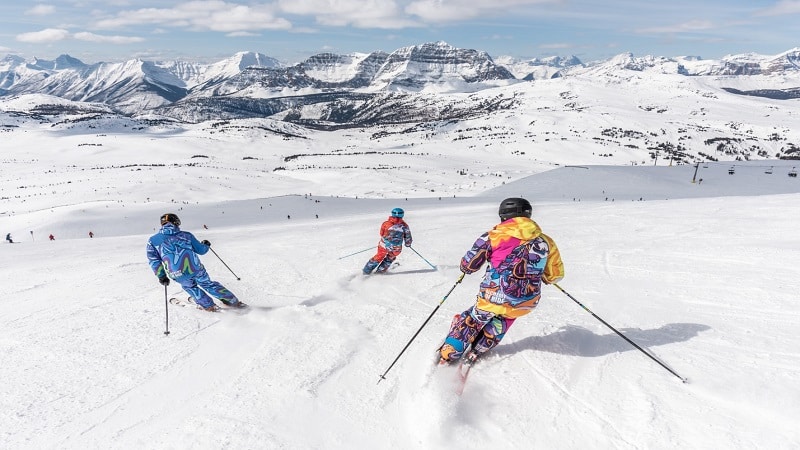As winter rolls in and snowflakes begin to dance, skiers everywhere eagerly anticipate hitting the slopes. But what if that thrill is slipping away? Ski seasons are shortening, and it’s not just your imagination. With climate change and rising temperatures, many ski resorts are facing challenges that affect the length and quality of the snow season.

You might be wondering how this impacts your favorite winter getaway. The once-reliable months of powdery bliss are now becoming a race against time. Understanding these changes can help you plan your ski trips better and even advocate for a more sustainable future on the slopes. Let’s dive into the factors contributing to this shift and what it means for your winter adventures.
Overview Of Ski Seasons
Ski seasons are essential for snow sports lovers, providing thrill and adventure in the wintry outdoors. However, these seasons are becoming shorter, impacting your favorite ski trips and overall enjoyment. Understanding this trend helps you anticipate changes and make the most of each snow-filled moment.
Factors Contributing To Duration
Several factors affect the duration of ski seasons.
- Rising temperatures: Global temperature increases alter snow conditions, leading to less reliable snowfall.
- Climate variability: Weather patterns fluctuate, causing unpredictable snowfall and inconsistent skiing conditions.
- Altitude variations: Lower elevation resorts experience more significant temperature changes, shortening their ski seasons.
- Infrastructure limitations: Resort capabilities for snowmaking may not keep pace with changing climate conditions, impacting snow cover.
- Environmental regulations: Changes in land use and conservation laws can limit expansion or new resort development.
Historical Trends In Ski Seasons
Historic data shows a clear decline in ski season length.
- 1950s-1990s: Ski seasons averaged around 150 days in regions like the Rockies, with consistent snowfall patterns.
- 2000s-present: Ski seasons now average 120 days or less, with many resorts opening later and closing earlier.
- Regional differences: Some areas face sharper declines, while high-altitude resorts might retain their seasons longer.
- Snow reliability: Historical averages demonstrate a notable reduction in dependable snowfall weeks, particularly during peak months.
- Impact of climate change: Studies report a shift in the first snowfall date, often arriving later in the fall or winter.
Being aware of these factors and trends helps you plan your ski trips effectively, ensuring you seize every chance to hit the slopes.
Climate Change Impact
Climate change significantly impacts your beloved ski seasons. Rising temperatures and altered weather patterns are changing how and when you can hit the slopes.
Temperature Increases
Temperatures across many ski resorts have risen by several degrees over the past few decades. For instance, studies show that average winter temperatures increased by about 1.5°F to 3°F since the mid-20th century. These increases mean earlier snowmelt and less consistent snow coverage, limiting your skiing opportunities. Many ski areas now face shorter seasons, especially at lower altitudes, where you might find conditions deteriorating even faster. The snowpacks that once ensured reliable runs are becoming less predictable, shifting your planning for ski trips.
Altered Precipitation Patterns
Changes in precipitation also contribute to shorter ski seasons. Increased winter rainfall instead of snow, especially in marginal areas, directly affects your favorite resorts. Many regions now see winters where storms deliver more rain than the fluffy snow you love. Some reports indicate a 30% increase in rain events instead of snow in certain regions during winter months. This shift not only diminishes snow quality but also affects your overall skiing experience. Resorts struggle with maintaining their trails as the delicate balance of freezing and thawing becomes increasingly unpredictable.
Being aware of these trends helps you plan your winter adventures better and ensures your time on the slopes remains enjoyable amidst shifting climate conditions.
Economic Effects
Economic impacts from shortening ski seasons affect you as a snow sports enthusiast and the resorts that provide your beloved winter playgrounds.
Impact On Ski Resorts
Reduced ski seasons lead resorts to face financial challenges. Shorter durations mean fewer days for you to carve through fresh powder, resulting in decreased lift ticket sales. Shrinking snow coverage affects terrain park setups, prompting resorts to increase operational costs for artificial snow. Some resorts might cut staff or limit amenities, reducing your overall experience. Smaller resorts, particularly those at lower elevations, struggle more and might even close. The survival of those you love to visit depends on adapting to these climate realities.
Changes In Tourism Revenue
Tourism revenues also take a hit as ski seasons dwindle. With an average ski season length falling from 150 days to 120 days or less, visitors find fewer days to hit the slopes. Mountain towns see less spending on lodging, dining, and local activities. Studies indicate that each skier typically contributes around $1,000 to the local economy during a trip. Consequently, diminished tourism affects everything from rentals to hospitality services, limiting your experience beyond just skiing. Local businesses that thrive on winter sports also struggle, impacting the community you hold dear. Adapting to these changes is crucial to ensuring the vitality of your favorite ski destinations.
Adaptation Strategies
You can consider several strategies to enjoy snow sports despite shortening ski seasons. Staying informed and proactive can enhance your winter experience.
Innovations In Snowmaking
Resorts invest in advanced snowmaking technologies to extend ski seasons. These innovations often include high-efficiency snow guns that produce snow quickly and use less water. Modern systems work efficiently even at higher temperatures, ensuring more reliable coverage. For instance, some resorts can now make snow when temperatures hover just below freezing, which keeps trails open longer. You’ll find that upgrades often prioritize sustainability, using renewable energy sources to lessen environmental impact. Check with your favorite resorts about their snowmaking capabilities; knowing this can help you plan your trips more effectively.
Shift To Alternative Winter Sports
As traditional ski seasons shorten, many enthusiasts explore alternative winter sports. Activities like snowboarding, cross-country skiing, and snowshoeing provide fresh thrills while adapting to changing conditions. For instance, you might find that ice skating on frozen lakes becomes a new favorite pastime during milder winters. These options often require less snow but still offer a wonderful winter experience. Some enthusiasts also turn to backcountry skiing, which allows you to seek out untouched terrain and deeper snow in remote areas. Embrace these alternatives to diversify your winter adventures and keep your passion for snow sports alive.
Conclusion
As ski seasons continue to shorten it’s essential to adapt and stay informed. Understanding these changes helps you plan your trips better and make the most of your time on the slopes.
Embracing new technologies and alternative winter sports can keep your passion alive even as conditions shift. By supporting sustainable practices you can contribute to the future of skiing and ensure that your favorite winter activities remain enjoyable for years to come.
So gear up and get ready for a winter adventure that respects our changing environment while still delivering the thrills you love.
















